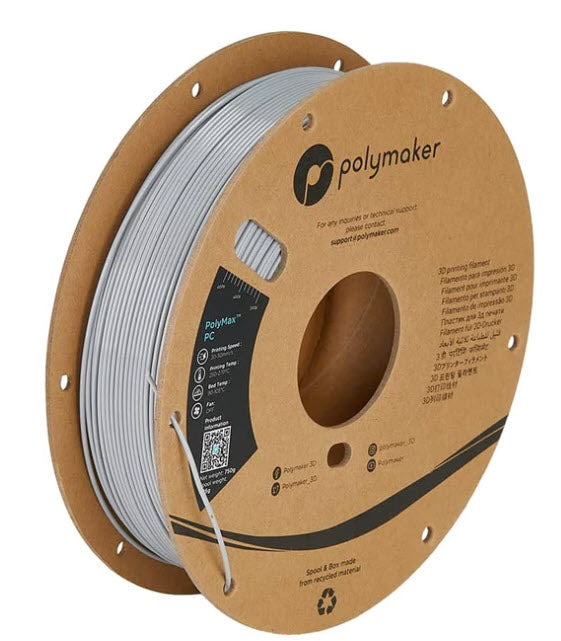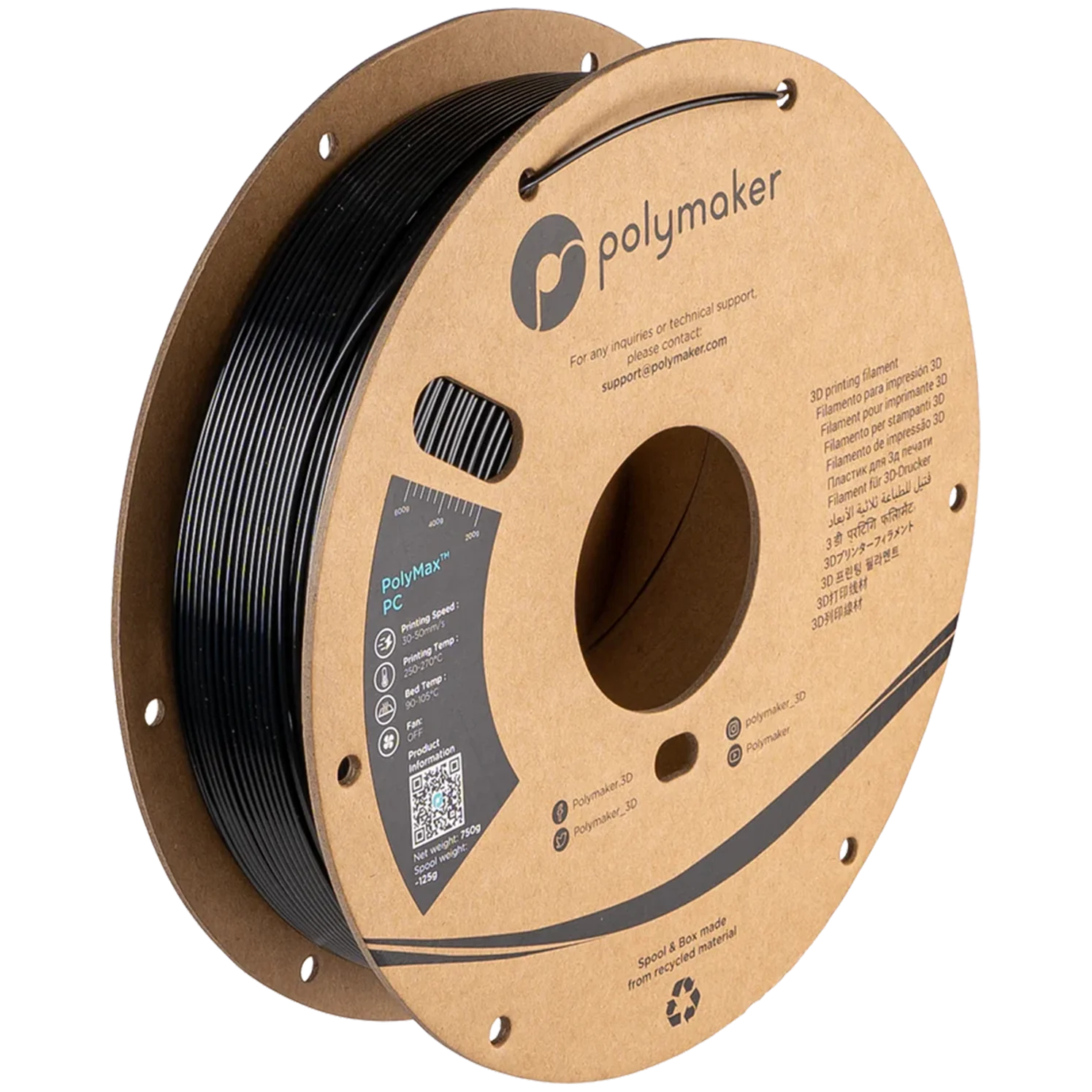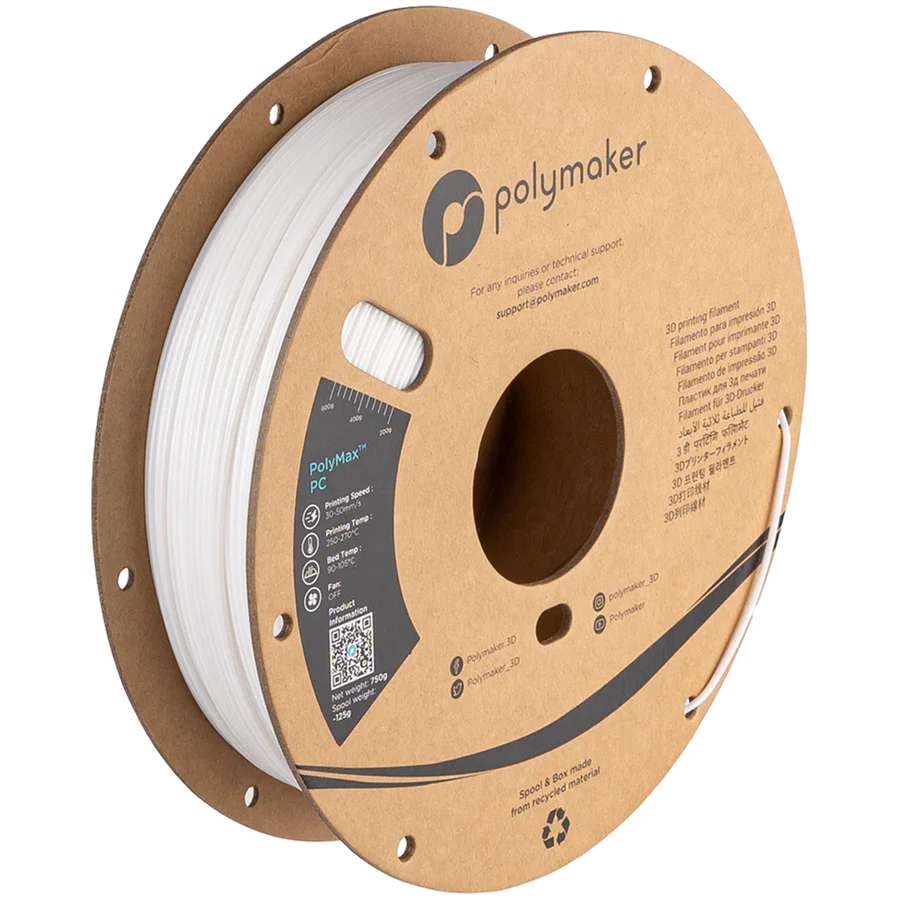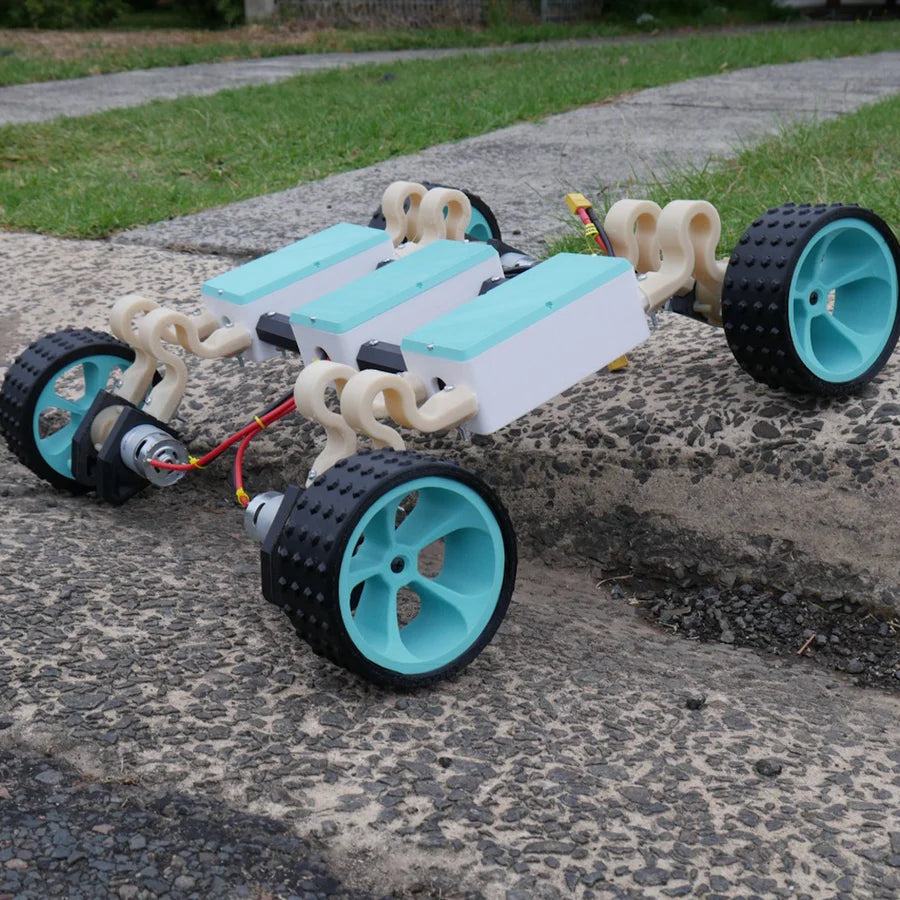Description
Lets Talk Engineering
PolyMax™ is a family of advanced 3D printing filaments produced with Polymaker’s Nano-reinforcement technology, to deliver exceptional mechanical properties and printing quality. PolyMax™ PC is an engineered PC filament combining excellent strength, toughness, heat resistance and printing quality. It is the ideal choice for a wide range of engineering applications.
-
Extreme Toughness
PolyMax™ PC offers best in class toughness and much improved mechanical strength compared to ABS and PLA under almost all testing conditions.
-
Heat Resistance
PolyMax™ PC offers better heat resistance than a wide variety of material types, withstanding temperatures well above 110 ºC.
-
Excellent Mechanical Strength
Parts made with Polymaker PolyMax™ show greater mechanical strength compared to ABS and PLA under almost all testing conditions.
-
Uncompromised Quality
PolyMakers rigorous in-house testing assures beautiful, reliable and accurate printed parts every time.
Specifications
| Specifications | |
| Diameter Deviation | < 0.05 mm (~ 0.02 mm typical) |
| Printing Temperature Range | 250 – 270 °C |
| *Buildplate Temperature * | 90 – 105 °C |
| Printing Speed | 30-50 mm/s |
*Polymaker PolyMax™ bonds really well with DIMAFIX Pen.
Click here to go to the Technical data sheets page
Storage
Store filament away from the sun and in a sealed plastic bag with the silicon moisture bag inside.
Pricing
Price inclusive of GST
Shipping
All items are shipped within 24 hours of order (working days).





